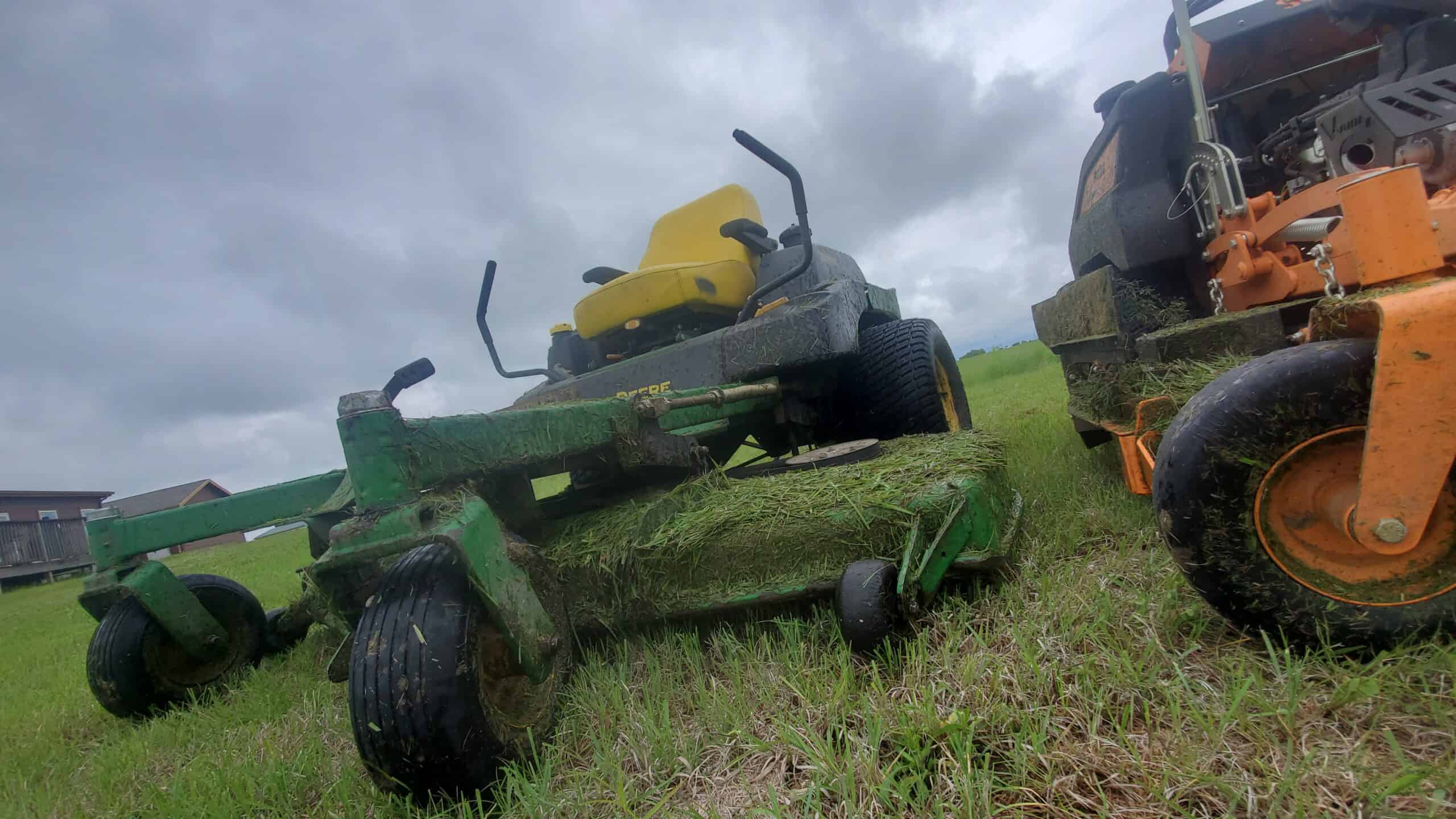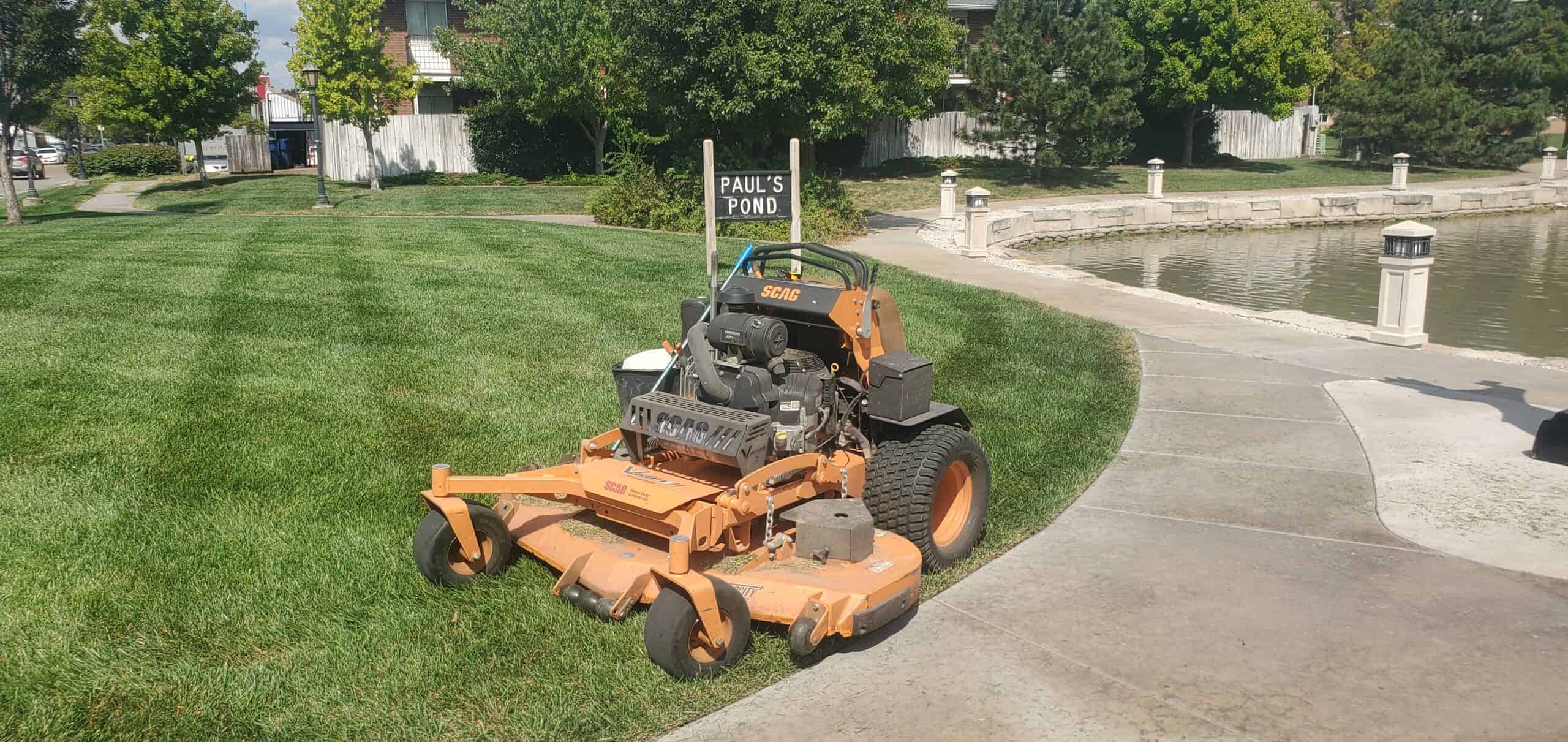Lawn Mowing and Allergies: A Comprehensive Guide for Kansas Residents
Kansas, often called the "Sunflower State," is known for its vast prairies, expansive farmland, and a climate that experiences hot, dry summers and chilly winters. For many residents, maintaining a lush and healthy lawn is a point of pride and a task for weekend mornings.
However, pursuing the perfect lawn can come with a price for those with allergies. This article will explore the intricate relationship between lawn mowing practices and allergies in Kansas. We will explore the role of grass pollen and discuss strategies to reduce allergy symptoms through proper mowing, yard cleanup, and mulching techniques.
Let’s cut to the chase.
 Alt: Your mowing techniques can impact your reaction to lawn pollen and seasonal allergens
Alt: Your mowing techniques can impact your reaction to lawn pollen and seasonal allergens
 Managing allergies during lawn mowing services can be tricky. Here are a few more tips to help:
Managing allergies during lawn mowing services can be tricky. Here are a few more tips to help:
The Role of Grass Pollen in Kansas Allergies
Grass pollen is a primary culprit behind allergies in Kansas. The state's diverse grass species, including Kentucky bluegrass, Bermuda grass, and tall fescue, produce copious amounts of pollen during their growing seasons. This pollen becomes airborne during mowing, making it a significant source of allergens for those with grass allergies. When grass pollen comes into contact with sensitive individuals, it can trigger a range of allergy symptoms, including sneezing, runny or stuffy nose, itchy and watery eyes, and throat irritation. These symptoms can be exceptionally bothersome during the spring and summer when grasses are in full bloom and frequently mowed. Alt: Your mowing techniques can impact your reaction to lawn pollen and seasonal allergens
Alt: Your mowing techniques can impact your reaction to lawn pollen and seasonal allergens
3 Strategies for Reducing Lawn Allergy Symptoms
Strategies for reducing lawn allergy symptoms involve minimizing exposure to allergens like grass pollen. Personalized lawn maintenance solutions can provide additional relief for those with severe allergies. While it may be tempting to avoid mowing altogether to minimize exposure to grass pollen, practical steps can be taken to reduce allergy symptoms while maintaining a beautiful lawn. Here are three effective strategies:- Choose the Right Time: Timing is crucial when it comes to mowing and allergies. Avoid mowing on windy days when pollen is more likely to become airborne. Early morning or late evening mowing can also be beneficial, as pollen levels tend to be lower during these times. Schedule professional lawn maintenance services accordingly.
- Keep Your Lawn Short: Maintaining a shorter grass height can help reduce pollen production. Regular mowing also prevents grass from becoming overgrown and producing excess pollen. Ask a local landscaper for more tips.
- Manage Grass Clippings: Properly handle grass clippings to minimize pollen exposure. Consider using a bag attachment on your mower to collect clippings or a mulching mower that finely chops clippings and redistributes them into the lawn. This step can help reduce pollen in the immediate vicinity.
Other Mowing and Landscaping Tips for Allergies
 Managing allergies during lawn mowing services can be tricky. Here are a few more tips to help:
Managing allergies during lawn mowing services can be tricky. Here are a few more tips to help:
- After mowing, perform a thorough yard cleanup to remove any remaining grass clippings, leaves, or debris.
- Use a leaf blower or rake to ensure your lawn is allergen-free.
- Trim shrubs to eliminate allergens and unsightly overgrowth.
- Consider mulching grass clippings or composting them rather than disposing of them in the trash.
 (316) 435-3509
(316) 435-3509 office@divine-lawns.com
office@divine-lawns.com